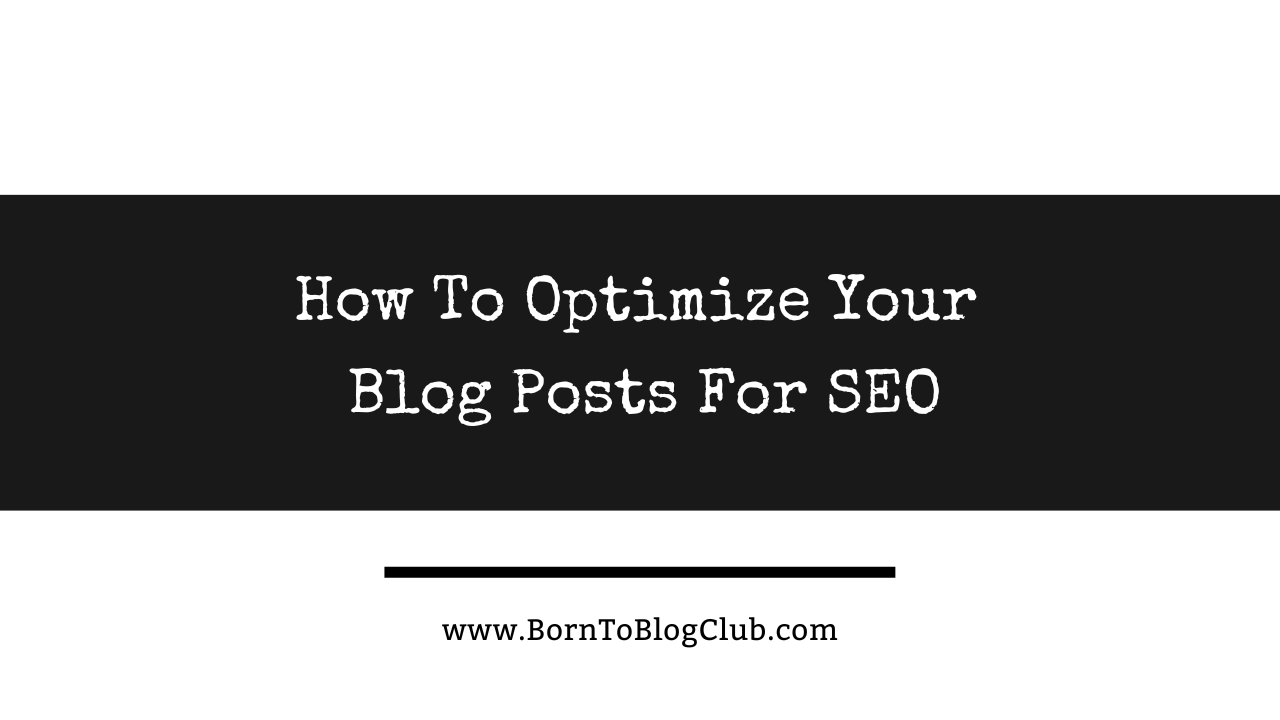Use these 12 Tips to Optimize Your Blog Posts for SEO Like a Pro! If you want people to actually find and read your blog post then you need to understand Blog SEO: How to Optimize Blog Content for Search Engines.
But, What does it mean to optimize a blog post? How do I format a blog post for SEO writing?
Don’t worry these Tips on Writing Blog Posts That Rank on Google will help you learn what “How to Search Engine Optimize Your Blog Content” actually means. Let’s dive into these tips for an awesome and SEO-friendly blog post!
How to Write an SEO-Friendly Blog Post: 12-Step Process
Optimizing your blog posts for SEO (Search Engine Optimization) involves several key steps to ensure that your content is visible and ranks well in search engine results pages (SERPs). Here’s a guide on how to optimize your blog posts for SEO:
📌 Keyword Research:
Conduct keyword research to identify relevant search terms and phrases that your target audience is using to find content related to your topic. Use tools like Google Keyword Planner, SEMrush, or Ahrefs to discover high-volume keywords with low competition.
📌 Use Target Keywords Strategically:
Incorporate your target keywords naturally throughout your blog post, including in the title, headings (H1, H2, etc.), meta description, URL, and within the body of the content. However, avoid keyword stuffing, as this can negatively impact readability and user experience.
📌 Write Compelling Titles and Meta Descriptions:
Craft catchy and descriptive titles that accurately summarize the content of your blog post. Include your target keyword near the beginning of the title whenever possible. Write persuasive meta descriptions that encourage users to click on your link in the search results.
📌 Optimize URL Structure:
Create SEO-friendly URLs that are concise, descriptive, and contain your target keyword. Use hyphens (-) to separate words and avoid using numbers or special characters in your URLs.
📌 Produce High-Quality Content:
Write informative, well-researched, and engaging content that provides value to your audience. Aim for comprehensive, in-depth articles that thoroughly cover the topic at hand. Use clear and concise language, and break up your content with headings, bullet points, and numbered lists to improve readability.
📌 Optimize Images:
Optimize your images for SEO by using descriptive file names and adding alt text that includes relevant keywords. This helps search engines understand the content of your images and can improve your chances of appearing in image search results.
📌 Internal Linking:
Include internal links to other relevant pages or posts on your blog. Internal linking helps search engines crawl and index your website more effectively, and it also helps users navigate your site and discover more content.
📌 External Linking:
Link to authoritative and relevant external sources within your blog posts. This not only adds credibility to your content but also improves your chances of being recognized as a valuable resource by search engines.
📌 Optimize Page Speed:
Ensure that your website loads quickly on both desktop and mobile devices. Use tools like Google PageSpeed Insights or GTmetrix to identify and fix any issues that may be slowing down your site.
📌 Mobile-Friendliness:
Optimize your website for mobile devices to provide a seamless user experience for mobile users. Use responsive design techniques to ensure that your content displays properly on all screen sizes and resolutions.
📌 Promote Social Sharing:
Encourage social sharing of your blog posts by adding social sharing buttons to your website. When your content is shared on social media platforms, it can help increase visibility and drive traffic to your blog.
📌 Monitor and Analyze Performance:
Regularly monitor your blog’s performance using tools like Google Analytics and Google Search Console. Track key metrics such as organic traffic, keyword rankings, and user engagement to identify areas for improvement and optimize your SEO strategy accordingly.
Final Thoughts…
By implementing these SEO best practices, you can improve the visibility and ranking of your blog posts in search engine results, attract more organic traffic to your website, and ultimately grow your audience and influence online.
About Me:
If we haven’t officially met, Hi I’m Blogging Brandi an EX-Corp Kool-Aid Drinker, born to be a blogger, Creator, and Entrepreneur! I also have a Degree in Finance and am a Licensed Cosmetologist. Plus, I LOVE RVing and hanging out with my Dogs (& I have a Cat too!)…
Please leave a comment below and Let me know your thoughts on this post. Also, don’t forget to Sign Up for the FREE B2B NEWSLETTER!
Related:
- Blog SEO: How to Search Engine Optimize Your Blog Content
- SEO Writing: 13 Tips on Writing Blog Posts That Rank on Google
- What does it mean to optimize a blog post?
- How to Write an SEO-Friendly Blog Post: 10-Step Process
- 10 tips for an awesome and SEO-friendly blog post
- 11 Tips to Optimize Your Blog Posts for SEO Like a Pro
